While waiting for performance-related information and even more advanced details, AMD is unveiling its RDNA 3 architecture.
Beyond the most “basic” information related to the availability and pricing of the Radeon RX 7900XTX and 7900XT graphics cards, AMD presented in more detail the GPU at the heart of these solutions, the Navi 31 and its RDNA 3 architecture.
300 + 222 mm² of technology
RDNA 3 is an opportunity for AMD to highlight all the experience acquired in the design of multi-chip chips by offering what Lisa Su, the group’s president, did not fail to highlight: it is is about the ” first GPU gaming chiplet “.
© AMD
The idea is, as on Ryzen, to move away from monolithic chips such as GeForce GPUs. AMD speaks in this case of the association of a Graphic Compute Die (or GCD) engraved in 5 nm by TSMC associated with several Memory Cache Die (MCD) engraved in 6 nm.
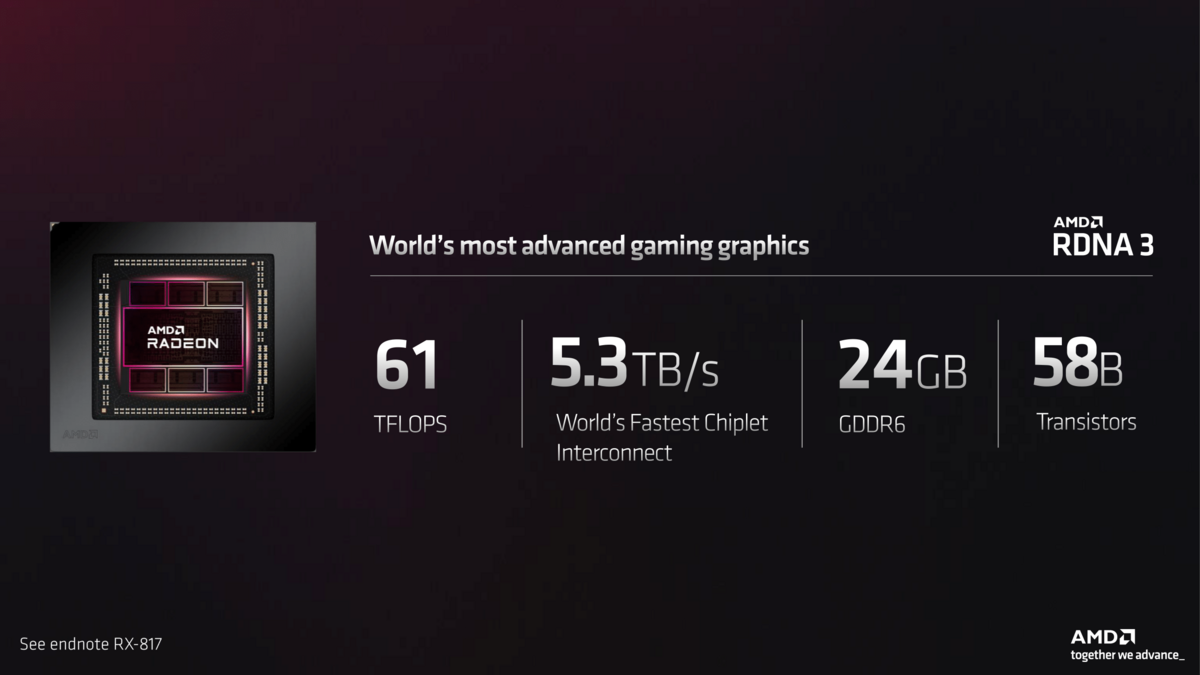
The GCD occupies an area of 300 mm2 while each of the MCDs is 37mm2a total of 222 mm2 when 6 of these Memory Cache Dies are used. In total, AMD puts forward the figure of 58 billion transistors on an entire RDNA 3 GPU, compared to 76.3 billion for an Ada Lovelace GPU signed NVIDIA.
58 billion transistors for a good cause
While it has already planned to detail its architecture before the release of its graphics cards, AMD has still given some details. We know for example that to take advantage of an effective chiplet design, its engineers have finely worked the interconnections.
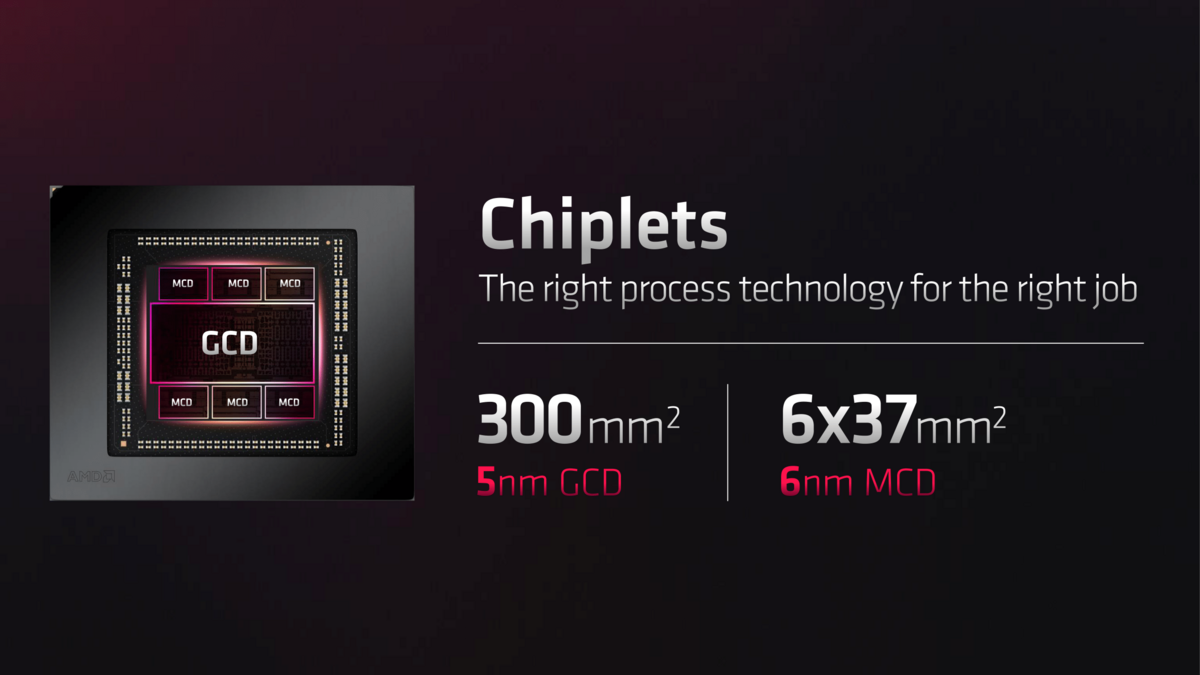
AMD thus emphasizes that with 5.3 TB/s of throughput, this is the ” world’s fastest chiplet interconnect link “. This point should thus make it possible to compensate for the lower quantity of Infinity Cache integrated by AMD compared to what was offered on RDNA 2.
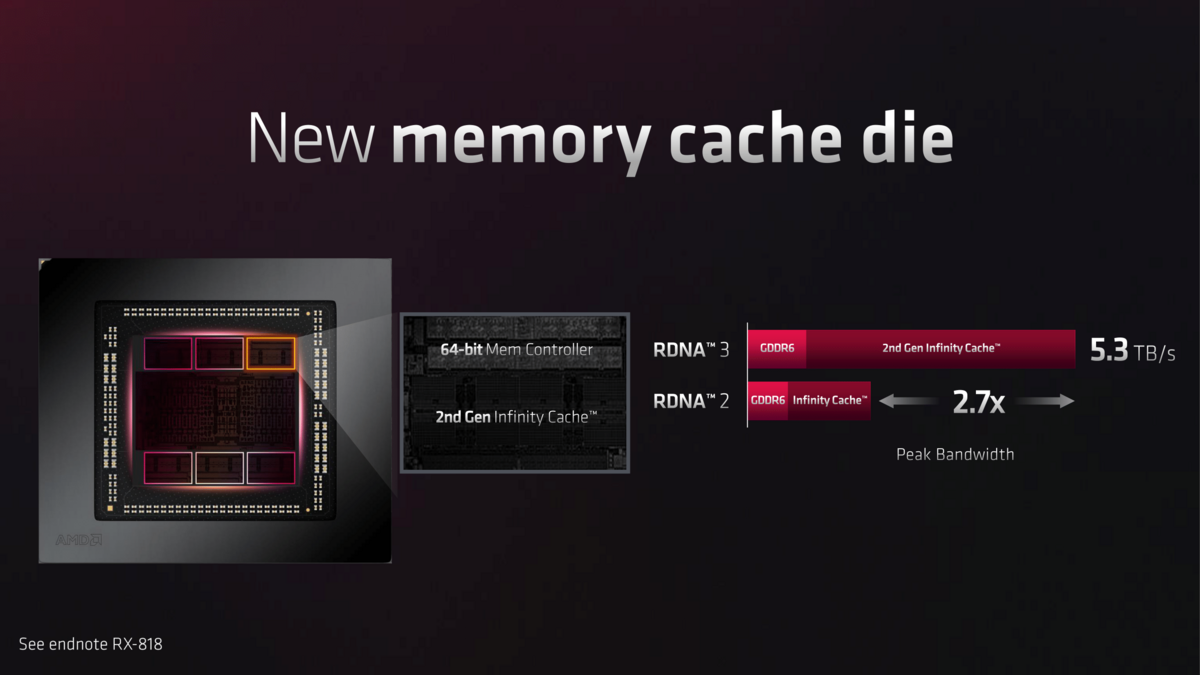
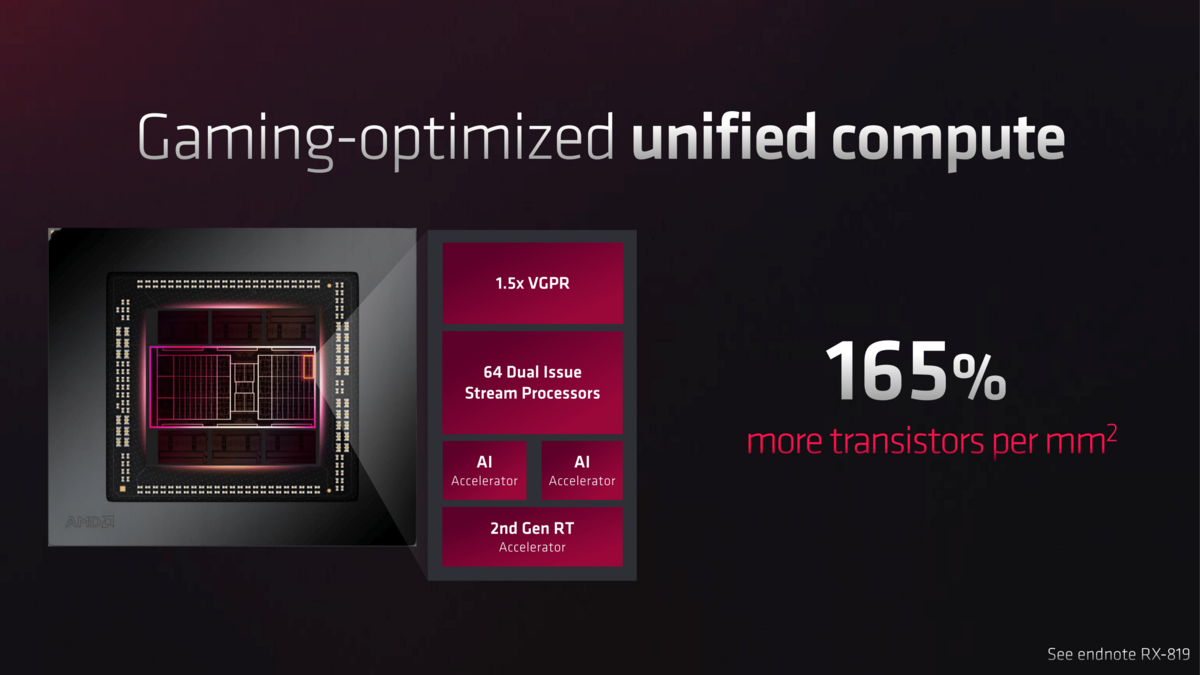
© AMD
Never stingy with figures, AMD drives home the point by emphasizing that the cache benefits from supercharged bandwidth: 2.7 times that of RDNA 2. here by +165% between the two generations.
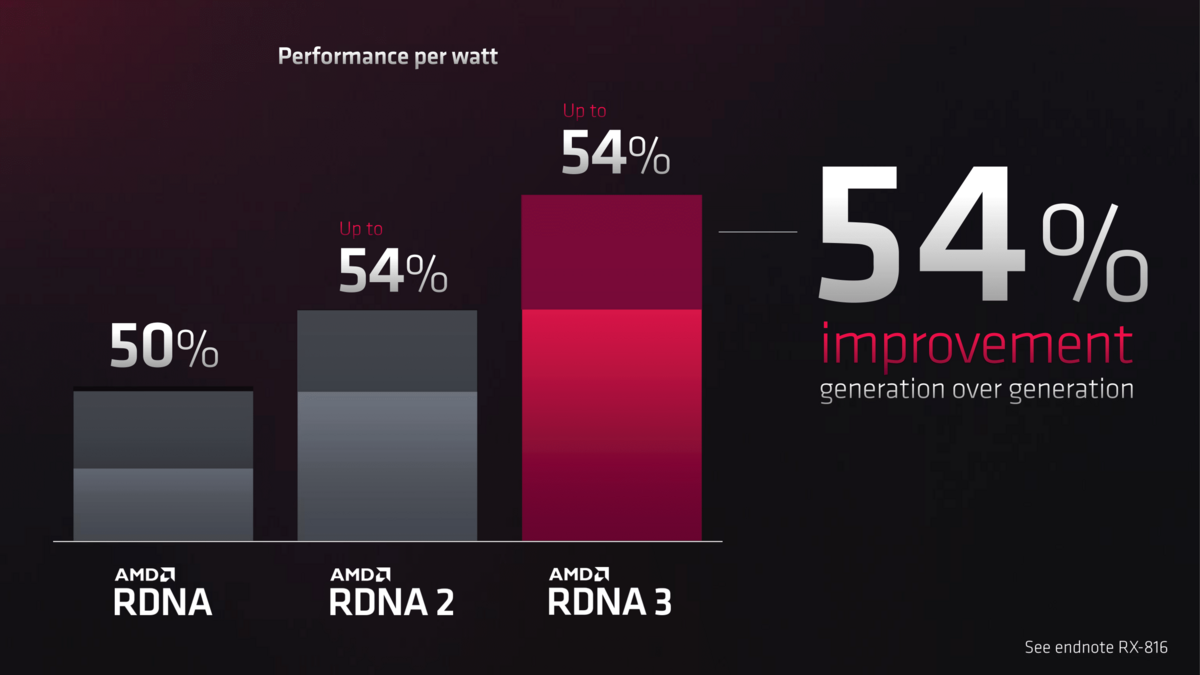
In addition, the new architecture deploys raw computing power estimated at 61 TFLOPS, when RDNA 2 is content with 23 TFLOPS. This significant generational leap is partly reflected in performance per watt: +54% on RDNA 2, which marked a similar increase over RDNA 1.
Source: AMD press conference

6